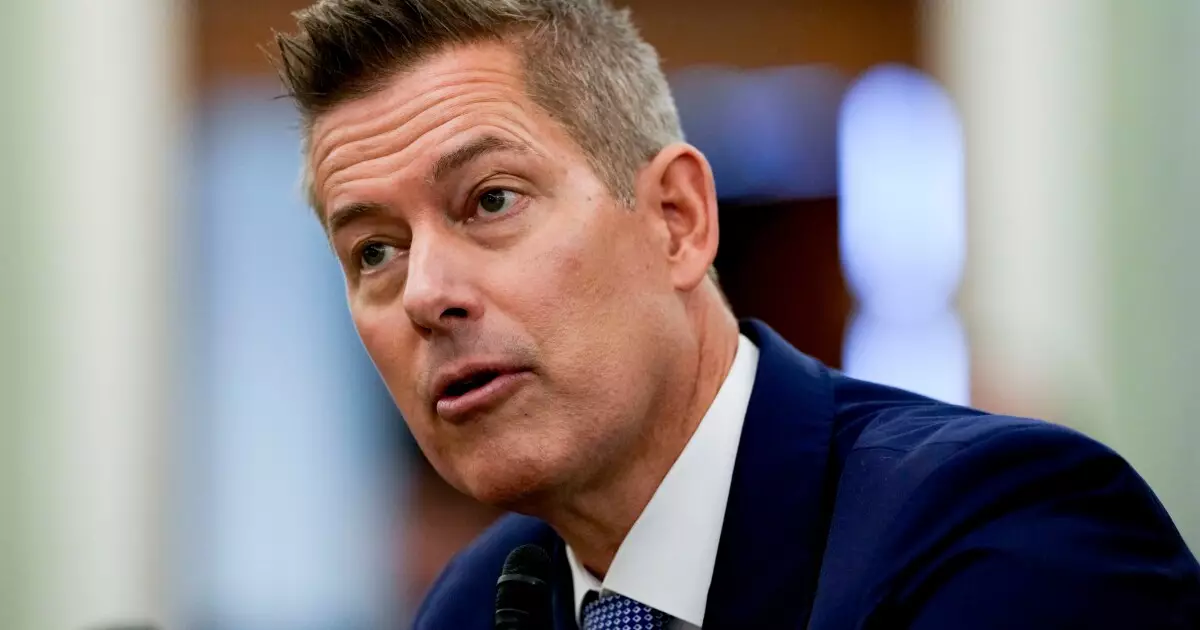The recent policy shift by the Trump administration, which lifts the financing cap for transportation projects from 33% to 49%, marks a pivotal moment in U.S. infrastructure development. While on the surface, this move appears to energize project sponsors—potentially allowing nearly half of project costs to be financed through TIFIA loans—it also opens a Pandora’s box of concerns. This expansion, ostensibly aimed at accelerating critical infrastructure, can easily morph into a catalyst for over-leverage, wherein projects become overly dependent on borrowed funds at the expense of fiscal prudence.
Leveraging the TIFIA program’s full capacity could indeed expedite urban transit improvements, highway expansions, and rural projects that were previously hamstrung by funding limitations. The administration touts this as a means to “get America building again,” but what risks do we accept when magnifying reliance on debt? Financing 49% of a project through government-backed loans raises questions about the long-term sustainability of such infrastructure investments, especially when repayment depends on revenues that are not always guaranteed or consistent.
While the intent is to accelerate project completion, expanding the TIFIA cap risks skewing priorities—favoring projects that can secure substantial federal loans over those seeking diversified funding sources. Projects overly dependent on TIFIA could crowd out private investments, skewing competition and potentially leading to a situation where the government takes on more risk without sufficient oversight or accountability. In essence, this is a gamble that could inflate infrastructure costs over time, burdening taxpayers with mounting debts and understated future liabilities.
Are We Addressing Root Issues or Masking Them?
By broadening TIFIA’s reach, the administration implicitly acknowledges that previous funding mechanisms have fallen short. Yet, critics argue that this is less about fixing systemic issues and more about sidestepping underlying problems, such as bureaucratic inefficiencies, funding fragmentation, and political inertia. The program, despite its popularity among financiers, remains underused due to complex requirements and prolonged approval processes—a bureaucratic hurdle that some believe still hampers effective deployment.
Additionally, expanding TIFIA risks blurring the line between debt-financing and project funding, making it difficult to distinguish between viable infrastructure investments and financially risky ventures. A significant concern is that generous loan provisions may incentivize a “lend first, worry about repayment later” mentality, leading to investments that prioritize quick approvals over project viability. At the core, this shift could undermine the delicate balance of federal and local funding contributions, drawing resources away from other critical programs like rural grants, maintenance, and safety improvements.
The debate over how much TIFIA funding should be integrated into project financing is not purely technical but fundamentally political. Some stakeholders worry that this expansion favors suburban and urban projects at the expense of rural areas, reflecting broader disparities in infrastructure funding. This could create a stark divide—urban centers accelerate while rural regions, which often lack the capacity to secure large loans, remain neglected.
The Future of Infrastructure Funding in a Competitive Political Arena
There is an underlying tension that transcends fiscal policy: how to ensure affordable, sustainable, and balanced infrastructure development burdened by minimal political interference. Expanding the use of TIFIA to nearly half a project’s cost might be perceived as a pragmatic step toward rapid progress, but it risks sacrificing fiscal discipline. With funds coming from federal loans that eventually must be repaid using non-federal revenue, policymakers should scrutinize whether such borrowing aligns with broader economic fundamentals.
Moreover, this move might inadvertently intensify funding contention within Congress—between rural and urban advocates, between those favoring direct grants and those championing loan-based programs. The sheer scale of this change suggests future battles over appropriations and program scope, potentially undermining the stability of surface transportation funding altogether.
In a broader sense, this policy modification signals an administration willing to prioritize immediate development over a balanced, nuanced approach. It relies on the belief that increasing leverage will stimulate economic growth and infrastructure renewal, but it also assumes that project oversight and risk management will keep pace with these bold ambitions. If mismanaged, this policy could spiral into a scenario where fiscal health is compromised for the sake of short-term infrastructural gains—a risky proposition in a complex and interconnected economy.

